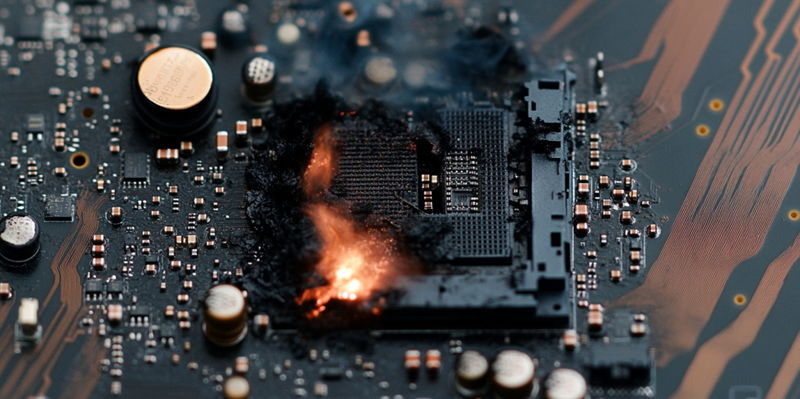In the world of PC building, unexpected hardware issues can stir significant concern, especially when they involve cutting-edge components like the MSI MAG X870 Tomahawk Wi-Fi motherboard and the AMD Ryzen 7 9800X3D processor. Recently, an incident involving a burnt motherboard socket and processor has drawn attention within the community, prompting MSI to release an official statement and initiate an investigation into the matter.
Incident Overview
MSI’s statement addresses the issue directly, emphasizing their commitment to product quality and transparency. The company is working closely with AMD and is maintaining contact with Gamers Nexus, an independent entity also investigating the situation. While the burnt socket incident has caused a stir, it is worth noting that it is not as widespread as other recent hardware issues, such as the infamous melting 12VHPWR connectors on RTX 4090 graphics cards.
The incident came to public attention when a Reddit user shared alarming images of their burnt X870 motherboard socket and AMD Ryzen 7 9800X3D processor. A significant number of community members believe that the damage was due to human error rather than inherent design flaws in the processor or motherboard. Tech commentator Buildzoid speculated that the error was likely caused by an incorrect vertical installation of the CPU, ignoring the proper alignment indicated by the triangle mark. This improper installation reportedly resulted in chipping of the plastic on both the socket and the CPU substrate.
Investigation and Collaboration
In response to the incident, the Reddit user sent both the CPU and the motherboard to Gamers Nexus for a comprehensive investigation. This move highlights the tech community’s eagerness to uncover the exact cause of the malfunction. MSI is actively participating in the investigation, showcasing their dedication to understanding the issue and preventing similar occurrences in the future.
As the investigation proceeds, MSI plans to provide ongoing updates to keep the community informed. This approach reflects the company’s commitment to transparency and relentless pursuit of quality control.
Addressing the Causes and Moving Forward
The crux of the issue appears to revolve around human error during CPU installation. Specifically, the incorrect vertical installation without proper alignment likely led to the damage observed. This incident underscores the importance of careful and precise handling of components during the assembly process to avoid costly mistakes.
As MSI, AMD, and Gamers Nexus continue their investigation, the findings will be shared with the public. This collaborative effort aims to provide a clear understanding of the factors that contributed to the incident and to develop actionable solutions to prevent future occurrences. The tech community’s collective efforts demonstrate a commitment to learning from mistakes and enhancing the overall reliability of PC components.
Conclusion
In the realm of constructing personal computers, unexpected hardware failures can generate substantial worry, particularly when they involve advanced components such as the MSI MAG X870 Tomahawk Wi-Fi motherboard and the AMD Ryzen 7 9800X3D processor. A recent episode where a motherboard socket and a processor were burnt has garnered significant attention within the PC building community. This incident has led MSI to issue an official statement and begin an investigation to understand the cause of the malfunction.
The occurrence of a burnt socket and processor is particularly alarming because these are high-end components favored by PC enthusiasts and professionals for their performance capabilities. Users rely on the reliability and durability of such components to ensure their systems run optimally. The community’s reaction underscores the importance of component safety and the potential consequences of hardware failures. MSI’s proactive approach in addressing the situation reflects the company’s commitment to quality and customer satisfaction while reassuring users that the issue is being taken seriously.

